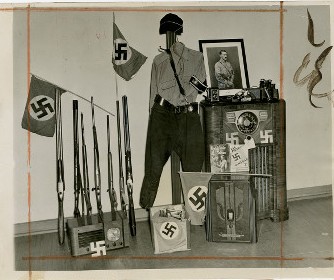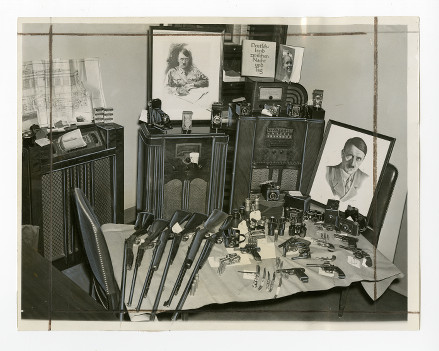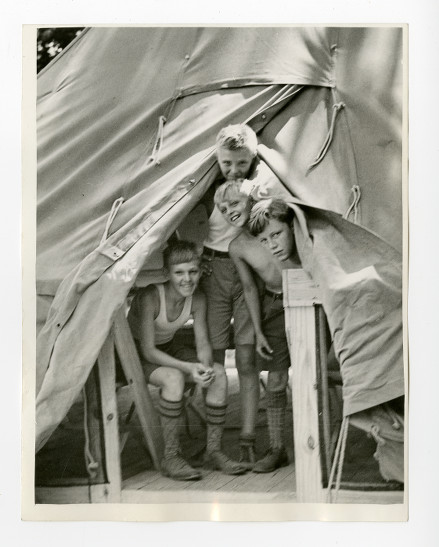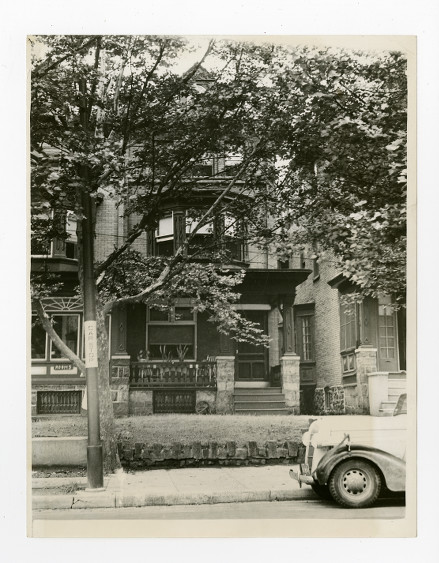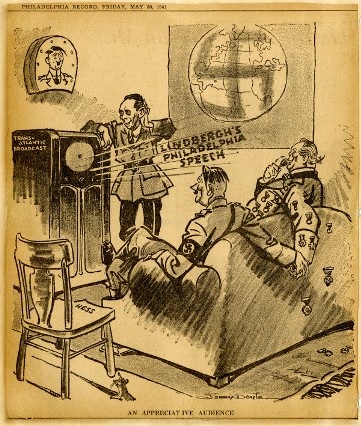In 2015, The Historical Society of Pennsylvania (HSP) launched HSP Encounters, a new digital resource comprised of an ever-growing number of genealogical and biographical databases.
HSP Encounters is an ongoing project in which records and materials deemed of high research value are digitized and made available to Friends of HSP online, in searchable form. Historical essays incorporated in the system describe each database as well as establish historical context for the records contained.
To highlight the databases in HSP Encounters, we'll be featuring historical essays describing the database's context and contents on Roots & Branches. The inuaugral essay, written by Laura Michel, looks at the Home Missionary Society of Philadelphia database.
HSP Encounters is available to all researchers while inside the Reading Room. Remote access is a benefit to Friends of HSP. HSP also offers a Research-by-Mail service, with professional researchers delving into the collection in reponse to specific queries, as well as a Rights & Reproduction service for those wanting an archival-quality print of HSP's collection materials. Friends of HSP receive 40% off Research-by-Mail requests & 10% off archival prints.
The Home Missionary Society of the City and County of Philadelphia was an organization that sought to spread its spiritual message of Christian piety through religious education and aid to the poor. Their reach was considerable—the Home Missionary Society of Philadelphia visiting book, 1883–1889 contains information collected during close to 5,000 visits to poor families, who were potential (and usually, actual) recipients of aid during the six-year period. Recipients of aid ranged from widows like Louisa Webb struggling to support her now-fatherless son who, tragically, was also a "chronic invalid" to single men such as Patrick Cohlen, an "aged" Roman Catholic enduring the final years of his life an ocean away from his native Ireland. In these and the thousands of other entries contained in the visiting book, valuable genealogical, demographic, and biographical information is provided for individuals and families who– generally absent from tax rolls, unable to afford a church burial, without a sufficient estate to be probated, and often without personal papers to leave behind–can otherwise be absent in the standard genealogical (and historical) record.
The impressive mobilization of people and resources by the Home Missionary Society of Philadelphia to visit the home of destitute Philadelphians such as Anna Hester, her husband–"a shoemaker out of work," and their three children and, upon determining the legitimacy of their need, providing the family with groceries, is illustrative of a larger trend in this period. As the nineteenth century reached its mid-point, a growing number of Philadelphians found themselves troubled by what they perceived to be a growing social and moral destitution in the metropolis and, indeed, throughout the country. One response to the apparent moral blight was the Home Missionary Society of the Methodist-Episcopal Church for the City and County of Philadelphia, founded in 1835 by members of the Union and St. George's Methodist Episcopal churches. Their primary objective was clear: "to promote the extension of the Redeemer's Kingdom, by means of preaching, prayer, and exhortation, and by the establishment of Sabbath-schools, distribution of Bibles, testaments, and other Books of a religious nature." The early successes of the group's missionary efforts, however, were tempered by their burgeoning awareness of the profound poverty present in Philadelphia. Buoyed by a social climate that encouraged benevolent deeds among the middle-class as both fashionable and honorable, the objectives of the organization were officially expanded in April of 1845 to include relief of the poor and care for destitute children. Additionally, by dropping the "of the Methodist-Episcopal Church" from its name, the Home Missionary Society of the City and County of Philadelphia officially became a nonsectarian organization with aims that were, as the subheading on the title page of its 1846 Annual Report proclaims, "Christian, but not Sectarian."
The recipients of relief as recorded in the Home Missionary Society of Philadelphia visiting book reflect this non-sectarian mission. While religious denomination is a category recorded by representatives of the society visiting the potential recipients of aid, there is no indication this information ultimately impacted if or what kind of help was provided. In a typical example, of the seven visits representatives made on December 22, 1883, seven families were granted relief by the society, none of whom were members of the Methodist Episcopal Church. Mrs. Smith, a Presbyterian, who was struggling to provide for her two children after her husband fell ill with pneumonia, was given a half ton of coal. Similarly, Susan Kilburn, a Baptist, whose husband was "injured by [an] accident," was given a quarter-ton of coal so that she, her husband, and child would not freeze during the cold winter months. Margaret McMullen and her family–members of the Episcopal Church, as well as two more Baptists, another Presbyterian, and a Roman Catholic family were also deemed to be appropriate recipients of aid that day in late December of 1883. In fact, not only is a diversity of Christian sects found in the record book, a handful of Jewish Philadelphians, including Amelia Unoskey, who had four children and a husband suffering from tuberculosis, also obtained assistance from the society.
As the entries of the visiting book attest, it was not mere hyperbole when the semi-centennial history of the Home Missionary Society observed that recipients of aid came "from all nations, climes, tongues, and kindred, of all ages and both sexes, these weary-laden, poverty-stricken sick and wounded children of Adam." In addition to providing information about the denominational affiliation of Philadelphians in need of support, representatives of the society also noted the name, street address, race, place of birth, and family size in the visiting book. The interviews conducted to verify the legitimate need of a family or individual were done with the female in charge of the household–widowed or otherwise–though single men are sporadically listed as recipients of relief. In general, aid went to families that lacked a male breadwinner, a condition induced by a variety of circumstances including death, illness, unemployment, neglect (more than a few husbands were deemed to be "worthless") and abandonment. Indeed, a glimpse into the causes and experiences of poverty can be found in the short descriptions included by society representatives in many of the visiting book entries.
The demographic information found in the visiting book highlights the racial and ethnic diversity of late nineteenth-century Philadelphia. Although a plurality of recipients of aid from the Home Missionary Society were natives of the city, many others were migrants from more rural parts of Pennsylvania or came from surrounding states such as Delaware, Maryland, New Jersey, and New York. More still were immigrants to the United States from Western European countries including Ireland, England, Scotland, and Germany. Also of note is the racial make-up of the recipients of assistance–the society frequently provided aid to black, or "colored," families, including Alice Tilford, a widow with a son who was "subject to fits." As was the case with their white counterparts, many were not natives of Philadelphia but came from nearby states or even the Caribbean. As varied as the backgrounds of those receiving assistance from the Home Missionary Society were, the type relief provided to individuals and families was fairly standard. As need was often greatest during the winter months when jobs were more scarce and illness more frequent, coal was a vital resource provided by the society to those in need. In many cases the one-quarter or half ton of coal provided was accompanied by groceries and, on some occasions, clothing or cash. Other recipients of aid did not receive coal, but some combination of groceries, cash, and (least often) apparel. A few indefatigable individuals undertook the society's visits to poor families, who were identified in the visiting book only by their initials (E. H. T., J. W. F., and J. B.). The majority of visits were by J. B., then by J. W. F. Most of the visits were during winter when many families struggled to keep their homes warm and supply other needs as well. Three members of the standing committee of the society's board in 1885 were Emanuel H. Toland, J. W. Field, and John Barry; these gentlemen evidently were the organization's representatives who visited and then authorized aid to thousands of homes of poor Philadelphians.
Copies of the original records may be obtained via HSP’s Research-by-Mail service (researchbymail@hsp.org).


